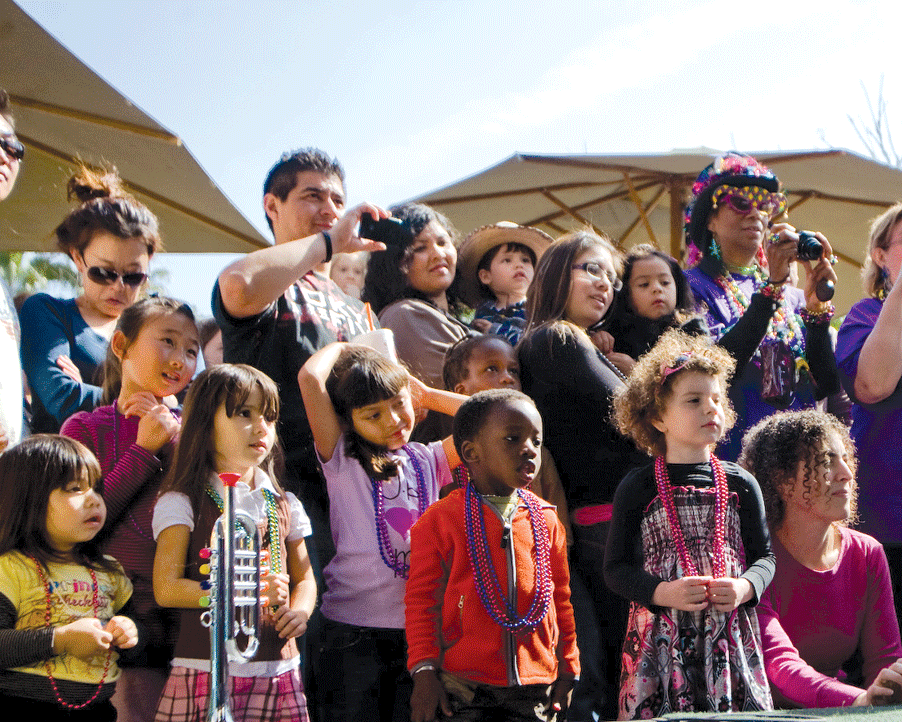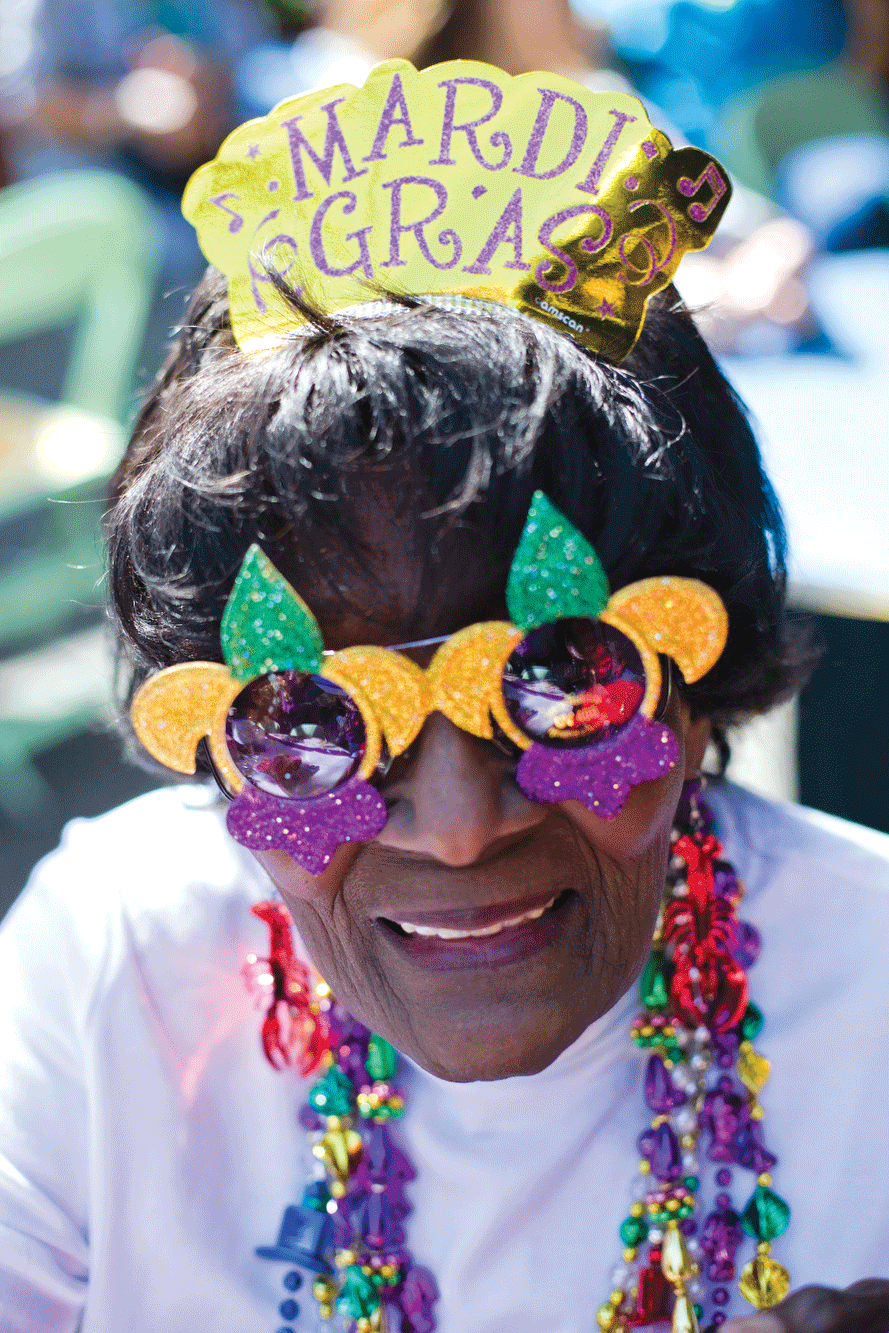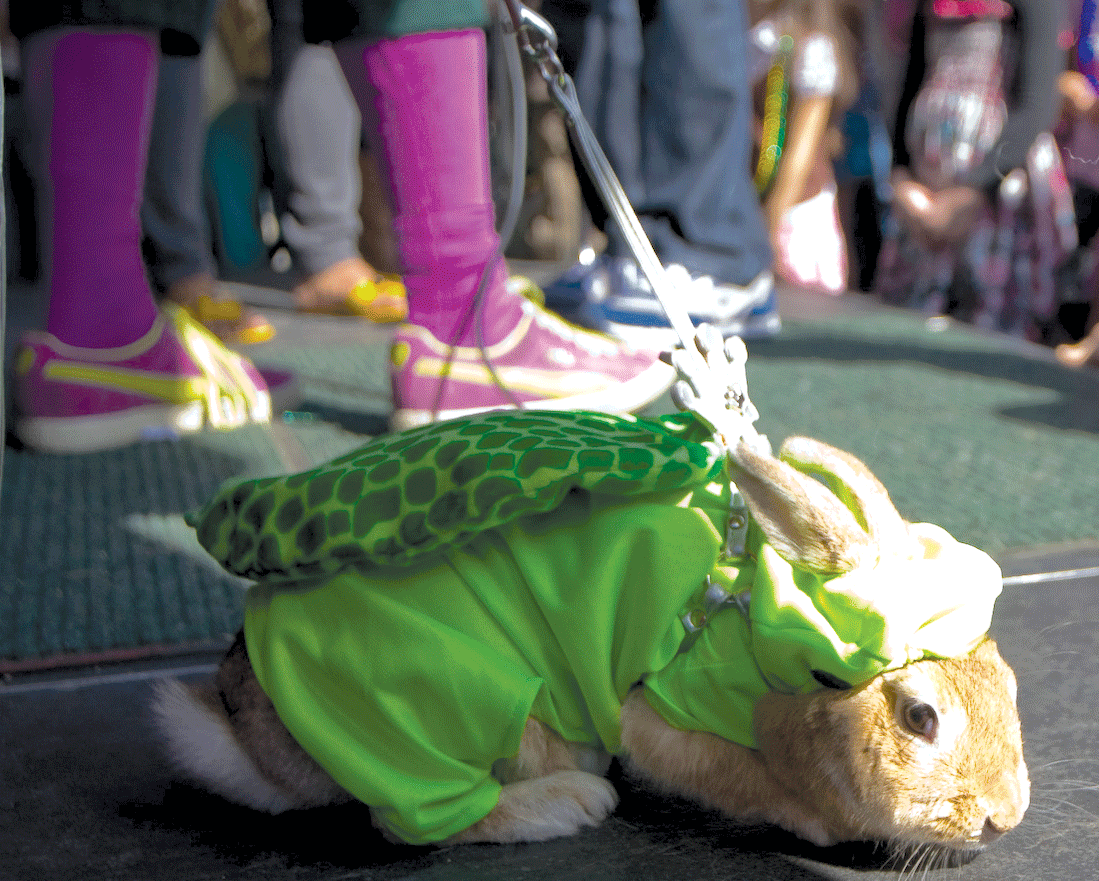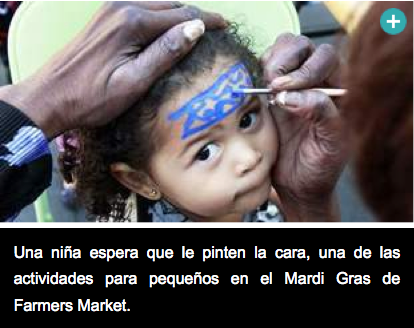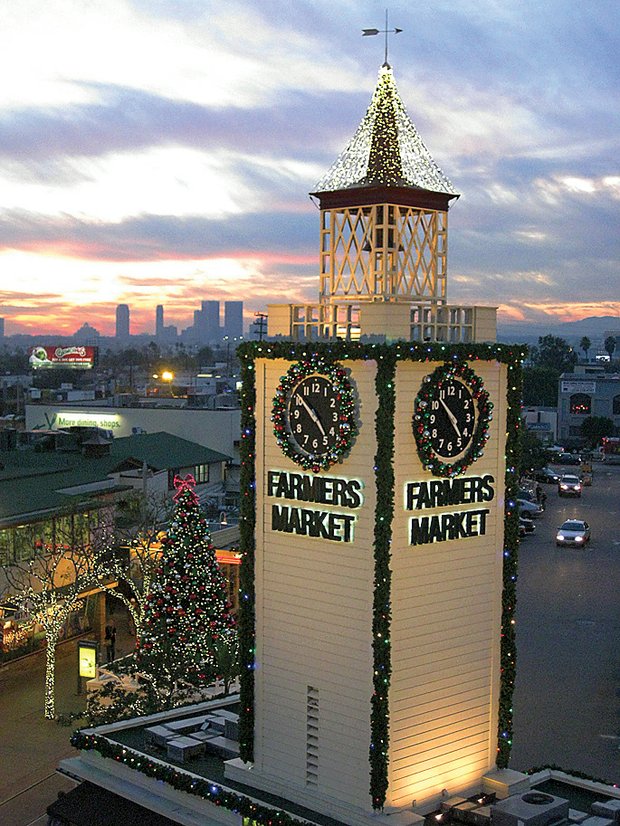In the News
Below are just a few examples of the new coverage that WHPR has provided their clients. Contact us today to see how we can help your organization.
-
Free Family Farmers Market Music
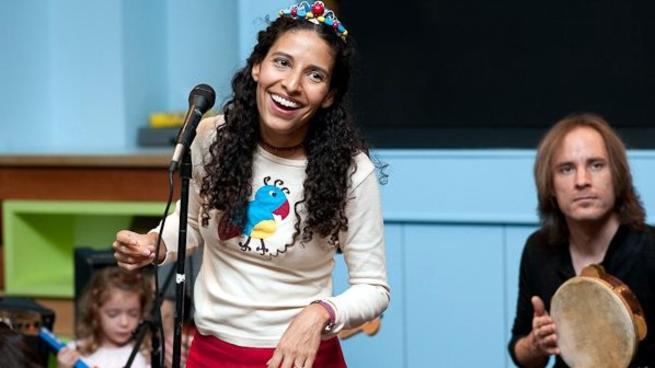 (Client: Original Farmers Market)
(Client: Original Farmers Market)Free concert series are burbling up all over the city this month — yep, we said “burbling” there, because we wanted a word to signal the joy in which we greet free live music — but there are few shows and happenings designated solely for the kid set.
Which is unfortunate, especially given the fact that many of us learned to love tunes while carrying around a little plastic toy radio (or, for some, an 8-track deck or cassette player — sweet memories).
So let’s give it up right now for the no-ticket-required kid concert. The Original Farmers Market at Third and Fairfax has a few of them going, and they’re pretty cute. The next one is up on Sunday, July 8, and it features Birdie’s Playhouse at 12:30 and 2 p.m.
Melissa Green & Friends plays on Sunday, July 22 and Gwendolyn & The Good Time Gang rock Sunday, Aug. 5. Oh, and The Conductors round out the summertime program on Sunday, Aug. 19.
What’s happening beyond the live, kid-fun music? Activities and face painting and such around the Farmers Market Plaza.
Oh, and if you’re looking for a for-the-adults to-do at the historic landmark, the always popular Taste of Farmers Market is up on Tuesday, July 17. Will you try small bites from basically every food stall in the Market? The answer to that is a happy shout. Yes, you will. You can buy your ticket at the Farmers Market office if you visit the July 8 Family Sunday.
http://www.nbclosangeles.com/the-scene/events/Free-Family-Farmers-Market-Music-161616745.html
-
The Manliest Barbershops in America
Which Shops Are a Cut Above the Rest?
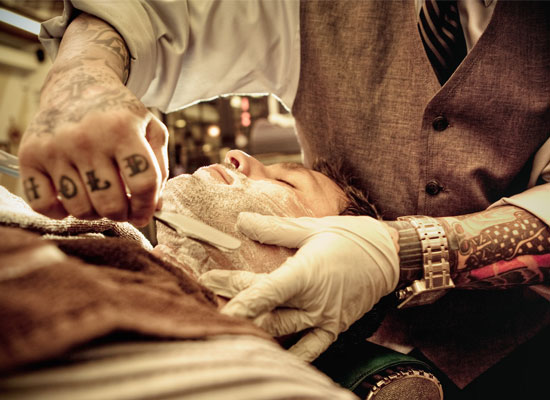 A great haircut is key to any man’s carefully crafted style—but finding the right chop shop isn’t just about striped poles and antiseptic combs. “When I was growing up, barbershops were incredibly low end. It was a place where you got a $5 haircut, and it smelled of sadness and Barbasol,” says Morgan Spurlock, the finely coifed director of the documentary Mansome. “Now there’s been this kind of resurgence of barbershops being a cool place to hang out. They can do much more than the traditional barbershop ever did.” Click through for 20 shops that promise solid cuts, good conversation, and even a nice, stiff drink.
A great haircut is key to any man’s carefully crafted style—but finding the right chop shop isn’t just about striped poles and antiseptic combs. “When I was growing up, barbershops were incredibly low end. It was a place where you got a $5 haircut, and it smelled of sadness and Barbasol,” says Morgan Spurlock, the finely coifed director of the documentary Mansome. “Now there’s been this kind of resurgence of barbershops being a cool place to hang out. They can do much more than the traditional barbershop ever did.” Click through for 20 shops that promise solid cuts, good conversation, and even a nice, stiff drink.The full article can be read at Mens Health
(Client: Original Farmers Market)
-
What should the Small Business Administration focus on?
Chamber Voice asks Sydney Wiesman “What top priority should the Small Business Administration focus on to better support your business?”
Read the full article in the link below.
-
Community Celebrates Mardi Gras in the Market
(Client: The Original Farmers Market)
Fat Tuesday rolled into Southern California a few days early, as the Los Angeles Farmers Market hosted its annual Mardi Gras celebration last weekend.
Under clear skies Saturday, a roving Dixieland-style jazz band kept diners and shoppers entertained, a group of smiling women handed out a boatload of bead necklaces, a zydeco band got dancers on their feet and pet owners brought out dogs dressed to impress for the “Mutti Gras” parade and costume contest.
“People love it. It’s such a hit,” said Ilysha Buss, marketing director for the market. “It’s nice because it’s a family friendly Mardi Gras celebration. Everyone can enjoy it.”
Mardi Gras Day, or Fat Tuesday, has become one of the defining characteristics of New Orleans, typically marked by parades, garish costumes and overall indulgence. Celebrated Feb. 21, it marks the end of Carnival season, the day before Ash Wednesday and the start of Lent in the lead-up to Easter.
It likely comes as no surprise that the market’s Mardi Gras festivities started at the Gumbo Pot, a popular Cajun restaurant at the market. The restaurant started celebrating 23 years ago, Buss said, and added it became a market-sponsored event four years ago.
The dining area outside the Gumbo Pot was home base Saturday afternoon for a group of several local women who said they’ve been attending Mardi Gras weekends for several years.
Decked out in colorful clothes, hats and beads, the group stocks up on 2,000 or so bead necklaces to hand out, Denetia Arellanes said.
“I do love Mardi Gras,” she said, but added she’s “from L.A., born and raised.”While most people walking around the market Saturday were not dressed in Mardi Gras attire, the dogs who took the stage for Mutti Gras certainly were, decked out in everything from jester outfits to fairy wings — and one rabbit in a tortoise costume.
The contest never fails to draw an excited crowd, said jester-costumed Gerry Katzman, who’s hosted for several years.
That was seconded by Rocky Keever, owner of the market’s Three Dog Bakery, who said the contest draws about 50 dogs and a great crowd. Keever’s shop helps host the parade and contest. Saturday was also a chance for him to spotlight the bakery’s “dog for dog” treats.
Similar to the model used by Toms Shoes, for every treat sold, Three Dog Bakery provides one to a dog in need, partnering with shelters and nonprofit organizations.
As afternoon shoppers made their way back and forth, a small crowd gather under the market’s iconic clock tower as David Sousa and his band, Zydeco Mudbugs, took the stage, blasting out a melodic blend of accordion-driven, Cajun-fried dance music.
Summing up the appeal of zydeco, Sousa said, “I used to be a rocker, but I like to dance, too.”
Original article from Park Labrea News Beverly Press .com
-
Como New Orleans el Mardi Gras
(Client: The Original Farmers Market)
Como cada febrero, desde hace 23 años, el Farmers Market de la calle 3 y la avenida Fairfax de Los Ángeles celebró este fin de semana su Mardi Gras, con música, danzas, y actividades para toda la familia.
“Esta es una de las celebraciones más populares del mercado”, señaló Maritza Cerrato, coordinadora de mercadeo del Farmers Market. “Cada año veo llegar caras conocidas que vuelven una y otra vez para Mardi Gras”.
Según Cerrato, la celebración convoca a miles de personas de los grupos más diversos.
“Es nuestra manera de acercar New Orleans a nuestra comunidad de Los Ángeles”, agregó.
Entre las actividades programadas hubo manualidades y pintada de caras para los más pequeños, grupos musicales y danza. Una tradicional banda de jazz de New Orleans marchaba por los corredores tocando música típica, mientras que desde los balcones, un arlequín arrojaba coloridos collares de cuentas, al mejor estilo del carnaval de New Orleans.
Cerrato explicó que este año quisieron integrar Mardi Gras con el carnaval brasileño, que se celebra para la misma fecha, y por ello trajeron a Lula Afro Brazil Samba De Roda, una banda bahiana que entretuvo a la audiencia y la hizo bailar pasos de samba.
La idea de celebrar Mardi Gras comenzó años atrás cuando el dueño del puesto Gumbo Pot de comida cajun tradicional invitó a un par de músicos a tocar durante la fecha. Desde entonces la celebración se fue ampliando y hoy la aceptación es tal que “no podemos dejar de celebrarla”, dijo Cerrato.
Lany Mora y su hija Brianna no sabían de la celebración, solo llegaron al mercado y se encontraron con la sorpresa. Brianna estaba muy entusiasmada con las actividades para niños y esperaba en línea para que le pintaran la cara, “como de princesa”.
Lo mismo le ocurrió a José López, que llegó con su familia para desayunar y se quedó para la celebración.
“Nos gustó la música y el ambiente, ya sabiendo, volveremos el año próximo”, comentó.
Para aquellos que se perdieron el fin de semana y todavía quieren celebrar Mardi Gras, pueden acercarse al Farmers Market mañana a partir de las 6:30 para festejar el “martes gordo”.
El histórico mercado data de 1934 cuando un grupo de productores agruparon sus camiones para vender sus frutas y verduras en un lote vacío conocido en ese entonces como Gilmore Island, en la misma esquina en la que sigue el día de hoy, 78 años después.
-
Vital Juice LA – Tired of Salt? Try This
(Client: The Original Farmers Market) 










Friday, February 3, 2012 Spice World Go on, present a saucy dish. 
Looking to spice things up before Valentine’s Day? We’ve found a way to get your fire going: Dragünara Spice Bazaar. This recent addition to The Original Farmers Market (at Fairfax & 3rd) can give you pizzazz where it’s hottest–in the kitchen. Dragünara features hundreds of organic, kosher blends, from basics like oregano and cinnamon to exotic mixtures and sauces–many with healing properties. Indulge your senses: you can try before you buy. And take this spicy quiz:
- What’s a delicious, salt-free, sugar-free way to help stay slim? Click here.
- What’s a saucy alternative to ketchup for stir fries, sandwiches and all your dipping needs? Click here.
- Which spice is anti-inflammatory? Click here.
- What blend could get you to relish that plate of veggies? Click here.
Need some recipes? Check out these.
Shake it up.
Know a friend who needs some zest? Share this tip!
The Original Farmers Market, 6333 W. 3rd St., (323) 935-8888, MAP 






EVERYWHERE LOS ANGELES 
NEW YORK MOMS 
CHICAGO RECIPES 
COMING SOON: 
SAN FRANCISCO 

FITNESS | WELLNESS | NUTRITION | BEAUTY | RECIPES | DEALS Print This | Ask The Editors | About Us | Contact Us | Editorial Policy | Privacy Policy | Contest Rules | Advertise | Unsubscribe 
©2009-2012 Vital Juice Daily LLC. All rights reserved. 423 W. 55th Street, 10th Floor, New York, New York 10019 
-
Business Task Force Advances Services for Homeless
(Client: Home For Good)
By JERRY NEUMAN and RENEE WHITE FRASER
AFTER one year of implementation of the Los Angeles Business Leaders Task Force on Homelessness blue- print, Home for Good, there is much good news. There is also a golden opportunity for the business community to make the news even better.
The task force’s initiative to end chronic and veteran home- lessness in our region in five years consists of two equally important components. First, Home for Good seeks systemic changes that will enable the large number of local, regional, state and federal agencies to not only work together but also in concert with public and non-profit social service providers.
Second, Home for Good relies on the targeted use of existing permanent supportive housing and an increase in the total num- ber of those essential units available to homeless people.
The task force has made significant strides toward the first goal. The most welcome progress flows from sweeping support for Home for Good. Nearly the entire homeless services sector has joined countless elected officials and thousands of individu- als to implement Home for Good. There is a powerful commit- ment to change the way we address homelessness.
That resolve has produced impressive results. At a meeting convened by the task force, representatives from local and regional agencies met with senior federal officials. Together, they hammered out a list of specific procedural and systemic changes that the local participants sought from the federal agen- cies. Within a few weeks, all of those changes were under way. That process replaced an often contentious and counterproduc- tive atmosphere with one that is more cooperative and generates results.
Similarly, a boot camp that the task force and Community Solutions convened for those who work with homeless veterans achieved a remarkable feat. Those in the room found ways to reduce the time veterans wait for housing from 168 days to 30. Other systemic efforts are also moving forward. For example, progress is being made in the implementation of a single, uni- fied homeless data collection system. On the systems side, Home for Good is moving forward as planned.
On the housing side, the housing stock needed to fulfill the year-one goal of the plan has been realized, and we are optimistic that the region can stay on track to meet the long-term objective of the plan. The year-one number isn’t as large as it will grow in the next four years, however, so the task force has created a dynamic entity to produce permanent supportive housing.
The Home for Good Funders Collaborative is the first of its kind in our region. The concept is simple: The collaborative aligns housing seed money from all sources – foundations, gov- ernment agencies and corporate contributions. In the coming months, the collaborative will release a request for proposals to create permanent supportive housing, inaugurating a one-stop process for housing providers.
Where those who develop permanent supportive housing currently careen from one funding source to another, all with different applications and calendars, they will soon have a con- solidated path to pooled sources. For new development projects, this collaboration has the potential to ultimately decrease the housing production process from five years to two.
More importantly, the collaborative will greatly enhance the power of the funds it disburses. The housing generated by the sum total from the funding collaborative will be far, far greater than those of each participant’s contribution can ever be.
The spirit of cooperation that has infused the task force’s campaign is evident in the collaborative. Government agencies have committed funds to the process. So have foundations including the Hilton Foundation, with a challenge grant for $1 million of the $5 million the collaborative seeks in its first year. Several high-net-worth individuals have made substantial con- tributions and thousands of everyday folks brought in more than $500,000 with their participation in United Way’s Home Walk in November.
The collaborative represents the ideal path for corporate and business participation in the Home for Good campaign. It is, after all, good for business: Eliminating chronic and veteran homelessness will improve the business climate, save tax dol- lars, and create incentives for growth and expansion.
We all have a stake in reducing, rather than merely manag- ing, the nation’s largest homeless population, but few have a larger stake than the business community. From tourism to entertainment and restaurants to retail, business gets better where homelessness is sensibly and efficiently addressed.
The Home for Good Funders Collaborative offers a sound and practical way for the business community to join virtually everyone else in our region, all working to implement Home for Good together. It will also deliver a gift that is beyond value, replacing the ravages of life on the street with a home.
Jerry Neuman is an attorney with Sheppard Mullin Richter & Hampton LLP. Renee White Fraser is president of Fraser Communications. They co-chair the Business Leaders Task Force on Homelessness, a joint project of the Los Angeles Area Chamber of Commerce and the United Way of Greater Los Angeles. -
Dogs celebrate Mardi Gras w/ ‘Mutti Gras’ parade
(Client: The Original Farmers Market)
LOS ANGELES (KABC) — A Mardi Gras celebration went to the dogs this weekend in Los Angeles.
The Mutti Gras parade and costume contest was held at the farmer’s market in the Fairfax District.
Prizes from Three Dog Bakery were awarded to a canine king and queen. Miss Coco Puff, a Chihuahua and dachshund mix from Beverly Hills, was crowned queen.
Find the story on ABC local on their web page.
-
Hit the Road
Client: The Original Farmers Market
It sounds nutty but at Magee’s House of Nuts in the Farmers Market, the same 1880s still-working peanut butter-making machine has entranced tourists for more than 75 years. President Eisenhower once stopped by and posed with the contraption, his photo now hanging up above. There’s a hand-scrawled note from other famous visitors: “Thank you for the peanut butter. It was fab,” gushed The Beatles in 1964.
You’ll feel in a time warp at L.A. ’s original Farmers Market, a charmingly funky and bustling warren of 100 eateries and shops. Inside this historic landmark, the kindly 95-year-old owner of Kip’s Toyland sells yo-yos to another generation; 88-year-old Bob Gill for the 75th year creates fruit basket molds out of ice cream, and an artisan candy maker concocts English toffee in an open-window kitchen that’s barely changed since 1946.
This is also the place to feast on New Orleans-style fried alligator tail filet. With a hodgepodge of stalls offering 16 kinds of ethnic chow, foodies can have a field day. You’ll savor around-the-world delicacies while sitting in sometimes-dented mint-green metal foldout chairs around laminated patio tables, as a people parade passes by.
Later, prepare to journey to another world. The eclectic Farmers Market adjoins the upscale Grove shopping center, so old-school kitsch blurs into a modern wonderland inhabited by Nordstrom and Forever 21. Visitors can walk or hop on the free double-decker trolley to The Grove’s Disneyland-esque twinkle-lit main street which features designer boutiques, a multiplex, piped-in Sinatra music, dancing 60-foot-tall fountains and an American Girl doll store where Katie Holmes splurged with Suri.
The Farmers Market touts a rich Hollywood history — stars such as Humphrey Bogart and Lauren Bacall strolled the aisles and James Dean supposedly ate breakfast there the morning of his fateful drive. The Grove, too, is a celebrity magnet – tabloid fodder such as Michael Jackson’s children and Kim Kardashian have been spotted strolling past the faux Art Deco storefronts and on weekdays the gossip TV show “Extra” tapes live from its park.
And to think cows once chewed grass on this land. In the early 1900s, rancher Arthur Gilmore ran a dairy farm here until he struck oil. The Farmers Market launched in 1934 when 18 farmers sold fresh produce from trucks parked on vacant Gilmore property and then built permanent stalls.
From 1939 to ’57, the Hollywood Stars baseball team — owned by Bing Crosby, Barbara Stanwyck and Cecil B. DeMille — played at nearby Gilmore Field which is now CBS studios. The Farmers Market was not only frequented by Tinseltown royalty, it was the neighborhood grocery store.
“A lot of my customers are fourth generation,” said silver-haired Phyllis Magee, whose mother-in-law Blanche opened the market’s first stall in 1934. “As kids they stood on chairs and watched the peanut butter being made. Now they bring in their grandchildren who stand on the same chairs.”
Although a Starbucks and a Pinkberry have invaded the ranks, many of the businesses remain family-owned. Bob Tusquellas, 69, now bakes dinosaur-shaped dunkers and cinnamon buns at Bob’s Coffee & Doughnuts, but he started at the Farmers Market at age 11 slicing bacon in his father’s since-sold meat stand.
“I think the Farmers Market is the least changed place in Los Angeles. It’s totally authentic — you couldn’t even build this thing today,” the apron-wearing proprietor observed.
Over the years, new novelty shops sprouted — Light My Fire sells 1,200 different hot sauces including “Slap Ya Mama” and Shine Gallery offers vintage goods.
But the lasting allure of the Farmers Market — in this fast-paced, mall-crazed, aloof city — may be merchants like 95-year-old Irwin Kipper who can be found daily at Kip’s Toyland where he’s helped customers for 65 years.
Kipper has shunned electronic toys, stocking shelves with classics like Lincoln Logs, Etch-A-Sketch and Ant Farm.
“Everything is pretty much the same as it’s always been,” said the humble elfish toy man. “You’ll always get a lot of personal attention here.”
To see the full story at U~T San Diego click here
-
Salvaged Stock
(Client: The Original Farmers Market)
By Olga Khazan
EcoXOXO fills shelves with goods made with recycled items.
When most people shop for gifts, they’re after something brand new. But at EcoXOXO, a new shop in the Original Farmers Market, they’ll likely get something salvaged from the recycling bin.
John Cole, a longtime apparel buyer, opened EcoXOXO at the Fairfax District market in July to fulfill both his green-living mission and desire to sell unique, hand-made goods.
The shelves of the tiny kiosk are stocked with bags made from bicycle inner tubes, baskets made from electrical wires and rugs made from trash bags – to name a few. While some goods are designed locally, many are made in developing countries by cooperatives of crafts people who receive a cut of sales.
“There are amazing stories behind these item. And they sow people that we don’t have to make everything out of plastic,” said Cole, who acquires the items at trade shows and through his personal network.
An L.A. native, Cole owned a high-end leather goods store in Manhattan before returning to Los Angeles and opening the store with his own money. He said demand at the tourist destination has been good, with some items selling at a rate of about 100 a month.
Ilysha Buss, marketing director at the historic venue, said EcoXOXO fits well among the location’s eclectic mix of shops and restaurants.
“The Farmers Market prides itself on having unusual, eye-catching items, and there aren’t too many stores like his in the country,” Buss said.
Cole added it makes sense to offer his inexpensive products – which range from an $8 key ring made from a bicycle chain to a $170 picnic basket made by Mexican prisoners – in an economic downturn.
“We don’t need another $1,000 handbag,” he said. “But we all need gifts, and we’ll still share with others.”

